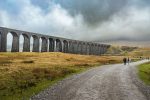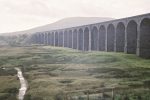Clifford’s Tower, York – History
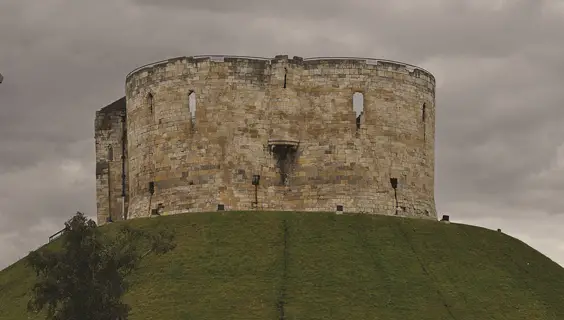
By Andrew Graham
One of the strange things experienced by visitors to York is the perceived lack of a quintessentially grand-looking castle for such a historic town. It would appear to be a major omission, until they scratch the surface of Clifford’s Tower and soon realise that what they are looking at is essentially a Norman motte-and-bailey castle. Perhaps the fact that it is surrounded by a sea of car parking leads to this misconception?
York actually had two castles, three if you include the Roman fortress and, arguably, four if we add the Civil War defences on The Mount that have now long since disappeared beneath Georgian villas. The sister castle of Clifford’s Tower was on the south side of the Ouse behind the city walls, now called Baille Hill, and both were constructed by William the Conqueror to protect the city from invasion along the river, as well as making his presence felt upon the city.
The population immediately rebelled, which led to the ultimate burning of the city in retribution and was instrumental in leading to the Harrying of the North that was masterminded from York. Baille Hill was subsequently left to become overgrown, but the continued use of York Castle as a fortress and prison for almost 1,000 years has meant that around Clifford’s Tower there existed, until recently, what was in effect a self-contained citadel within the city.
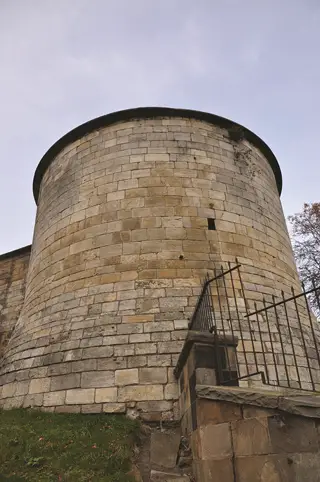
The remains of the castle defensive walls still performed a function – to keep prisoners in the Debtors’ Prison that stands immediately behind this tower.
“One of the icons of York”
The castle occupied a huge area and the whole south-east of the fortress was essentially a kind of militarised zone for much of its history. On construction, the Foss was dammed so as to create the King’s Fishpond that provided a northern water defence, and to the east the city walls provided a robust defence to the Ouse and beyond. Clifford’s Tower itself is one of the icons of York, perched precariously upon its mount.
The present building dates from the thirteenth century and is a very rare survival of the period. Its predecessor was burned down in a now infamous and tragic episode in which the town’s Jewish population were massacred. The new castle was likely designed by Henry of Reyns, Master Mason of Westminster Abbey, and takes much of its inspiration from French castles of the time with its rotund form and central gatehouse.
The name Clifford’s Tower has vague origins, but two theories by English Heritage suggest that the name may have come about due to the hanging of the rebel Roger de Clifford, whose body was displayed on the tower after his execution in 1322 following the battle of Boroughbridge.
“Fortunes waxed and waned”
The tower finally saw action, as it were, in the Civil War siege of York in 1644. Like so many strategic points in the defensive ring of York, the castle was a prime target; but the fighting was more concentrated around Bootham and Walmgate. Nevertheless, the castle was used as a Royalist stronghold and was repaired accordingly just prior to the Civil War in preparation. The castle’s fortunes waxed and waned after this and it eventually fell into further disrepair.
On the construction of the York Prison, which formed a central prison block with wings extending in all directions in the former bailey, Clifford’s Tower was maintained on its motte as a kind of folly, inaccessible and merely left by the authorities as an incidental old building.
Its rescue came in 1902 when Mr Basil Mott undertook investigations into the stability of the mound that ultimately led to the ownership by English Heritage. Most recently English Heritage have been attempting to improve the visitor experience of the tower by the building of a new visitor centre that, controversially, would be built partially within the motte itself.
This plan for a simple stone-clad building has experienced serious local opposition, which is unfortunate. However, the main problem for the future of the tower is its setting. Surrounded by car parking, with no sense of quality space around it, the scene really is something that needs improving and making public once and for all, as without this investment the city is failing itself in its duty to celebrate a key part of its townscape.
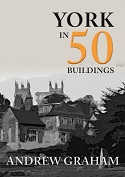
 Taken from ‘York in 50 Buildings’ by Andrew Graham published by Amberley Publishing, £14.99 paperback, ISBN: 9781445674087
Taken from ‘York in 50 Buildings’ by Andrew Graham published by Amberley Publishing, £14.99 paperback, ISBN: 9781445674087

